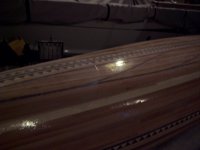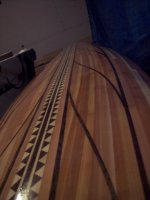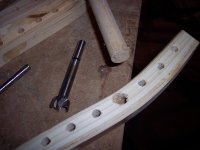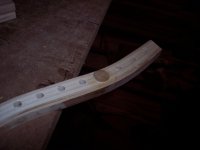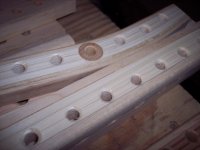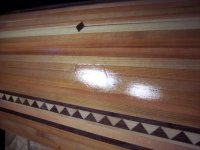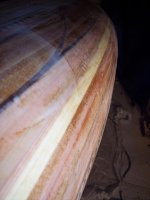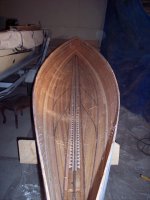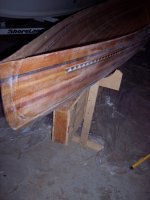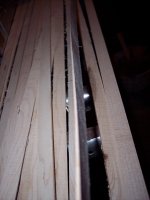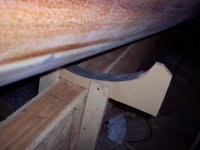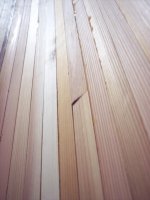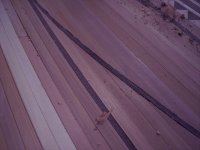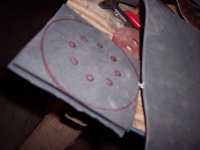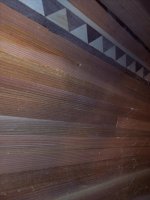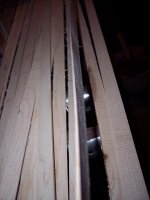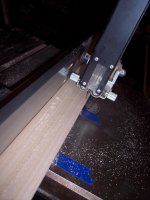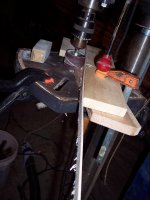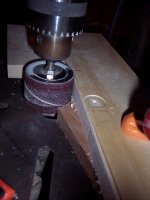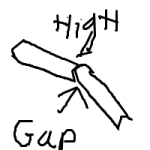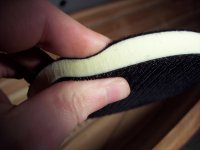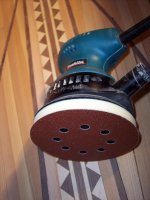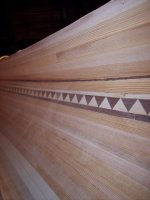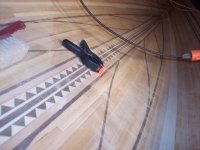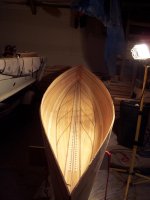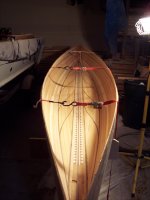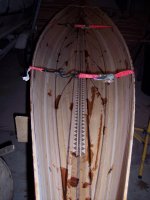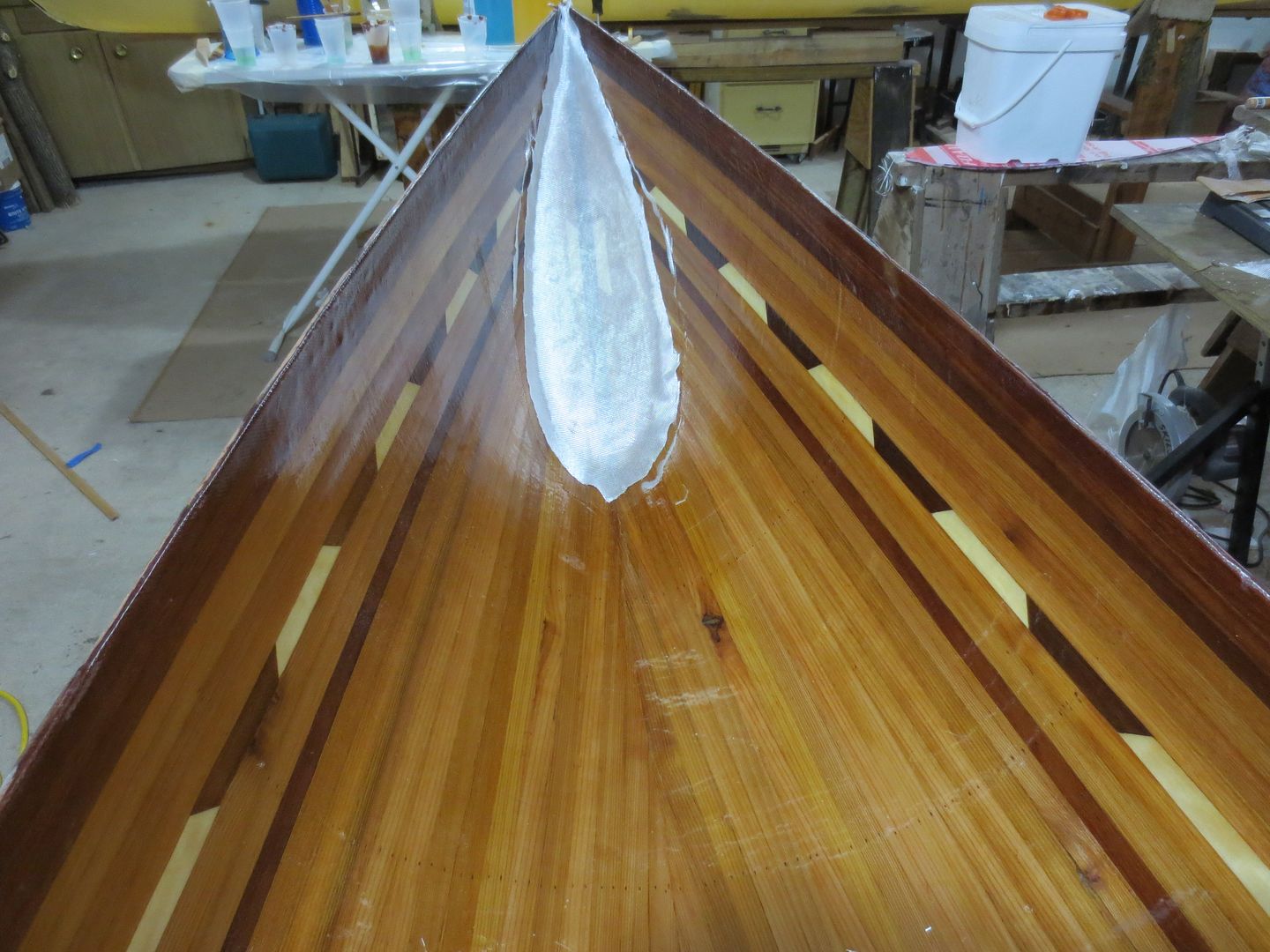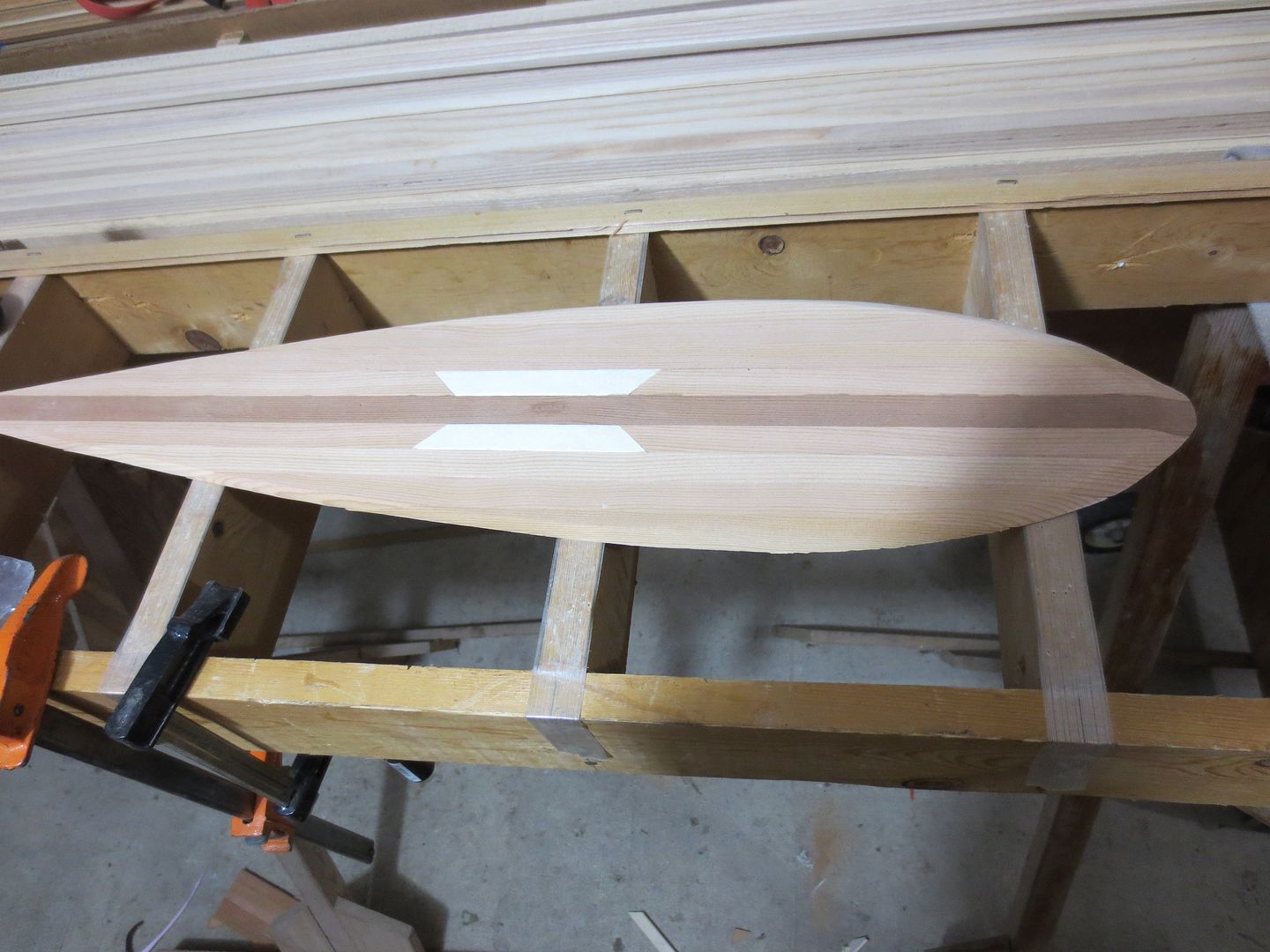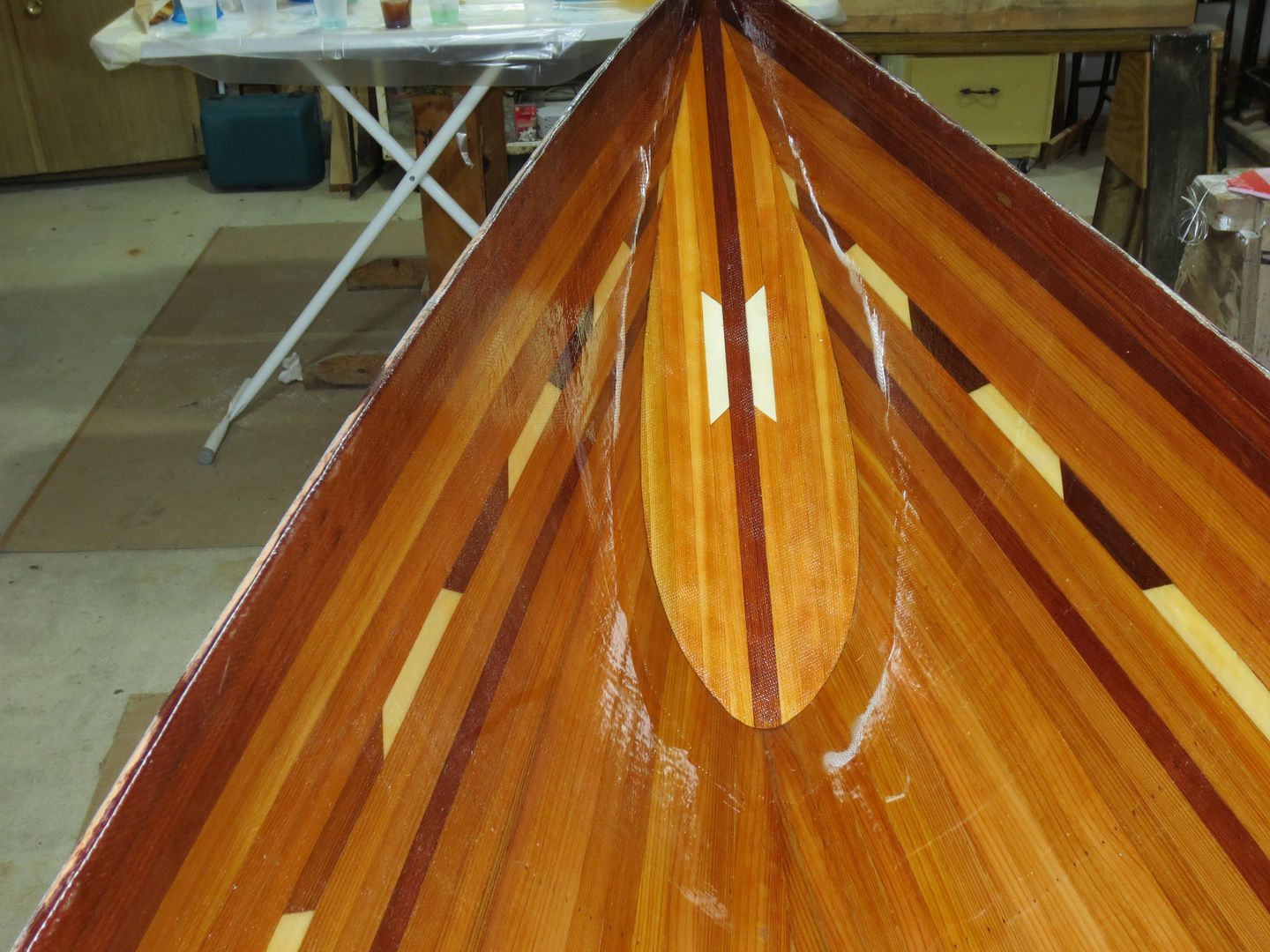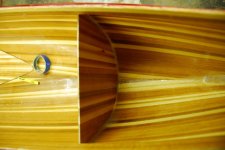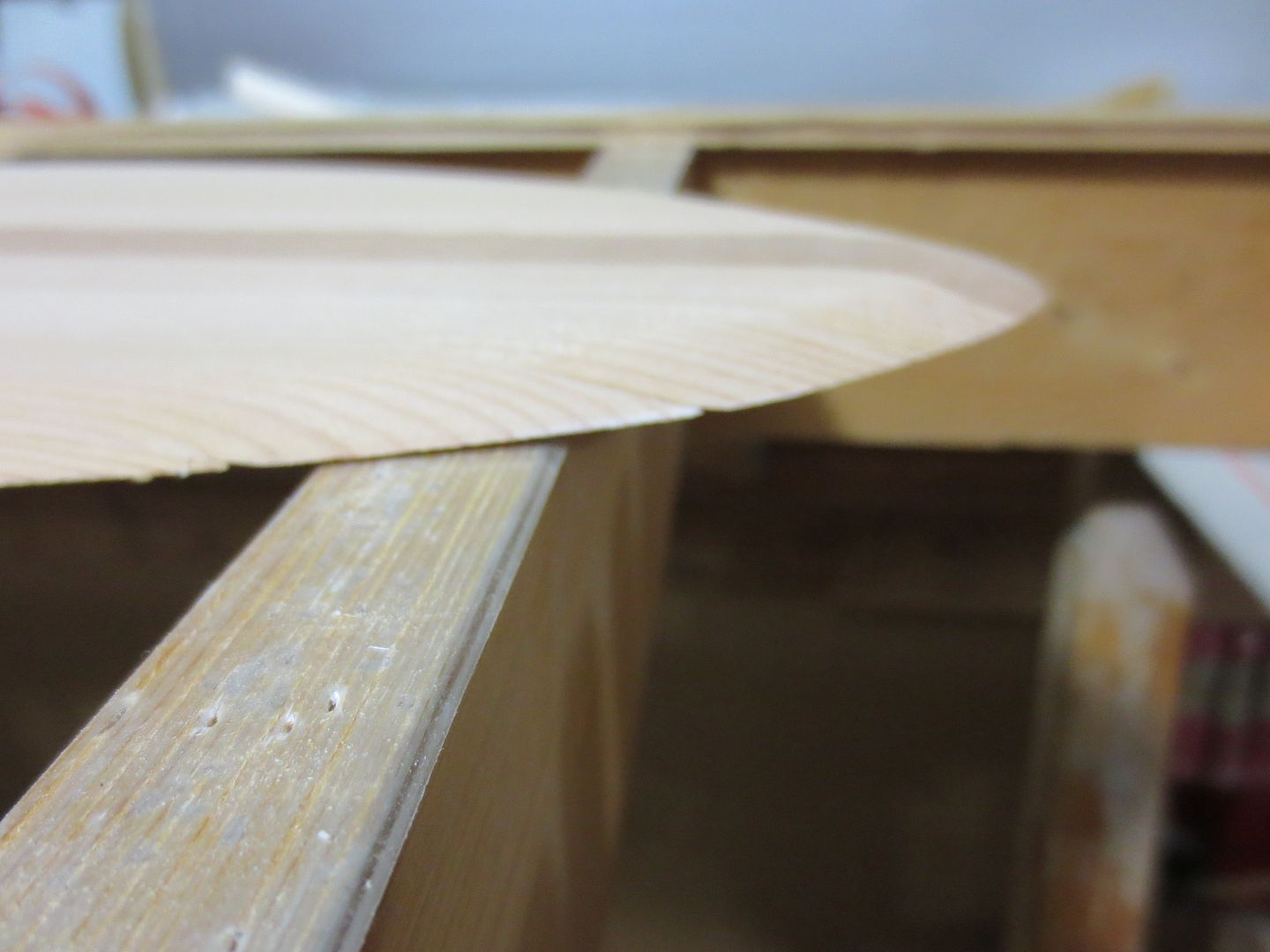No Title
Wow! Six weeks without an update? What happened?
- Deer hunting
- Work was insane (Phone support for a loyalty card for a major retail chain - what people put themselves through for $5!)
- A Bug that knocked me on my butt for most of the week
Alan Gage I'm looking forward to seeing what the inside is like. Also looking forward to figuring out what I'm going to use for Gunwales, as I'm currently out of ash, and have not yet bit the bullet on actually buying more hardwood.
But I did still get a few things done. Some of it some futzy stuff, but still.
Learned a few things... as always.
- If I'd known a bit more about peel-ply, I may have done the surface differently. May need to do some experiments before the next boat. I have a fairly decent glass surface, I think, but it is not filling as quickly as I had hoped. Burned a lot of resin on it. I have one spot where there is a float ridge in the layup, no Idea how it started, as I would have sworn that region was laid flat when I saturated it...
- A roller is a nice tipping-off tool, but a poor spreader, at least a cooler temps and thicker resin. I got my last coat spread on much better with a squeegee.
- Cheap rollers are evil. I may get better results with the cloth ones.
- Even a sharp drill bit is murder on a workpiece that gets away from you.
Wow! Six weeks without an update? What happened?
- Deer hunting
- Work was insane (Phone support for a loyalty card for a major retail chain - what people put themselves through for $5!)
- A Bug that knocked me on my butt for most of the week
Alan Gage I'm looking forward to seeing what the inside is like. Also looking forward to figuring out what I'm going to use for Gunwales, as I'm currently out of ash, and have not yet bit the bullet on actually buying more hardwood.
But I did still get a few things done. Some of it some futzy stuff, but still.
Learned a few things... as always.
- If I'd known a bit more about peel-ply, I may have done the surface differently. May need to do some experiments before the next boat. I have a fairly decent glass surface, I think, but it is not filling as quickly as I had hoped. Burned a lot of resin on it. I have one spot where there is a float ridge in the layup, no Idea how it started, as I would have sworn that region was laid flat when I saturated it...
- A roller is a nice tipping-off tool, but a poor spreader, at least a cooler temps and thicker resin. I got my last coat spread on much better with a squeegee.
- Cheap rollers are evil. I may get better results with the cloth ones.
- Even a sharp drill bit is murder on a workpiece that gets away from you.

